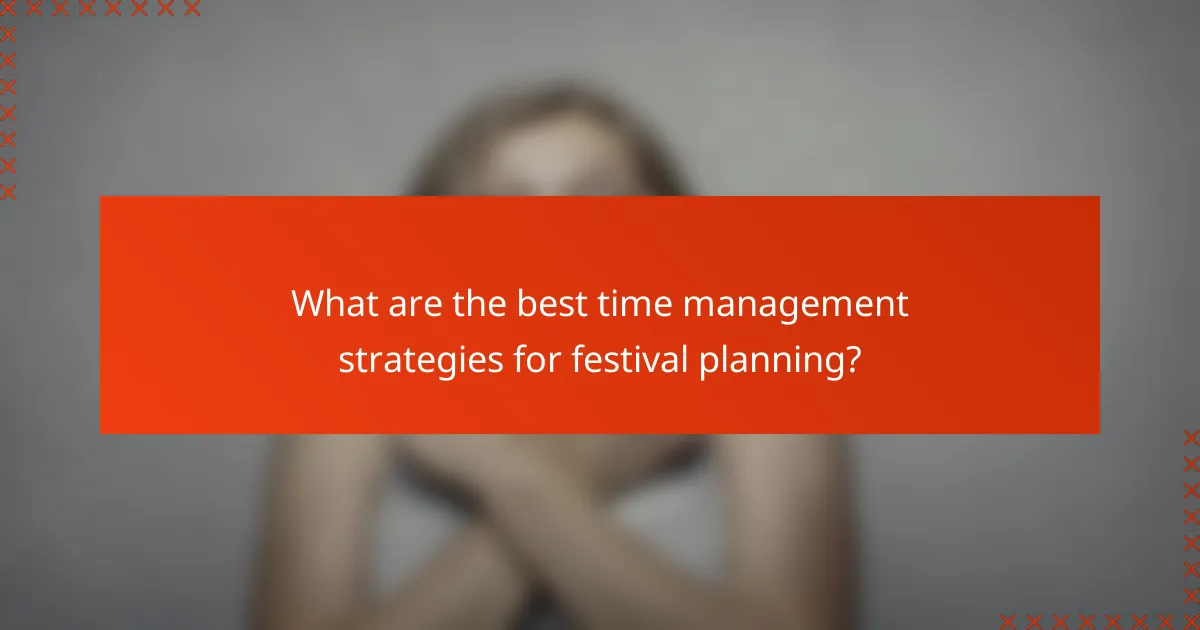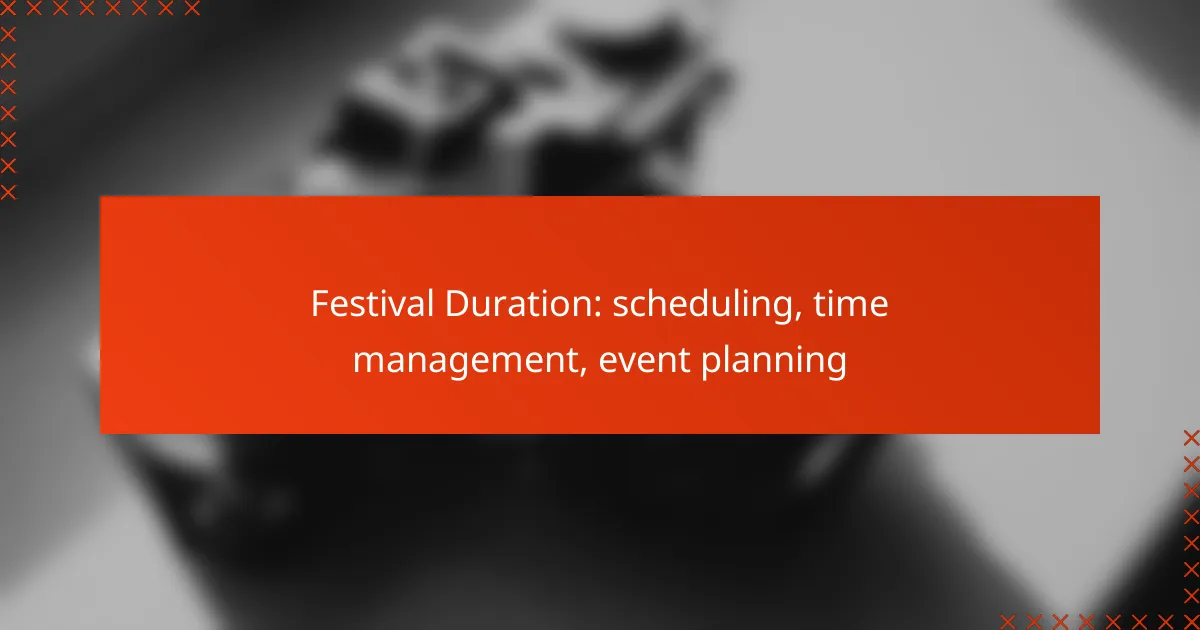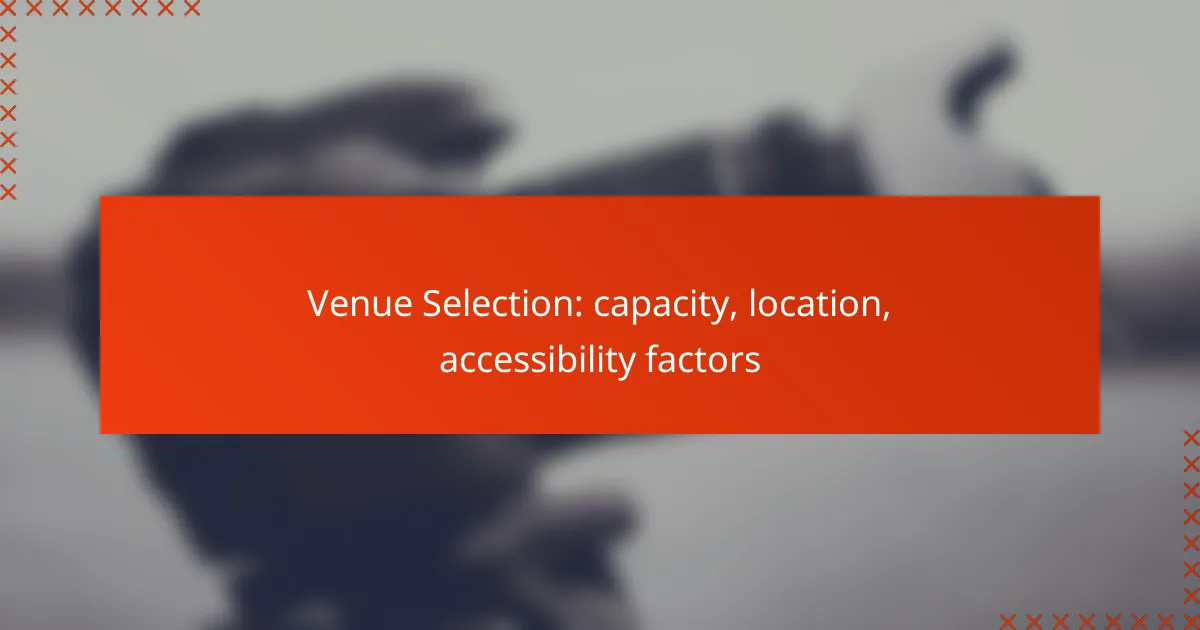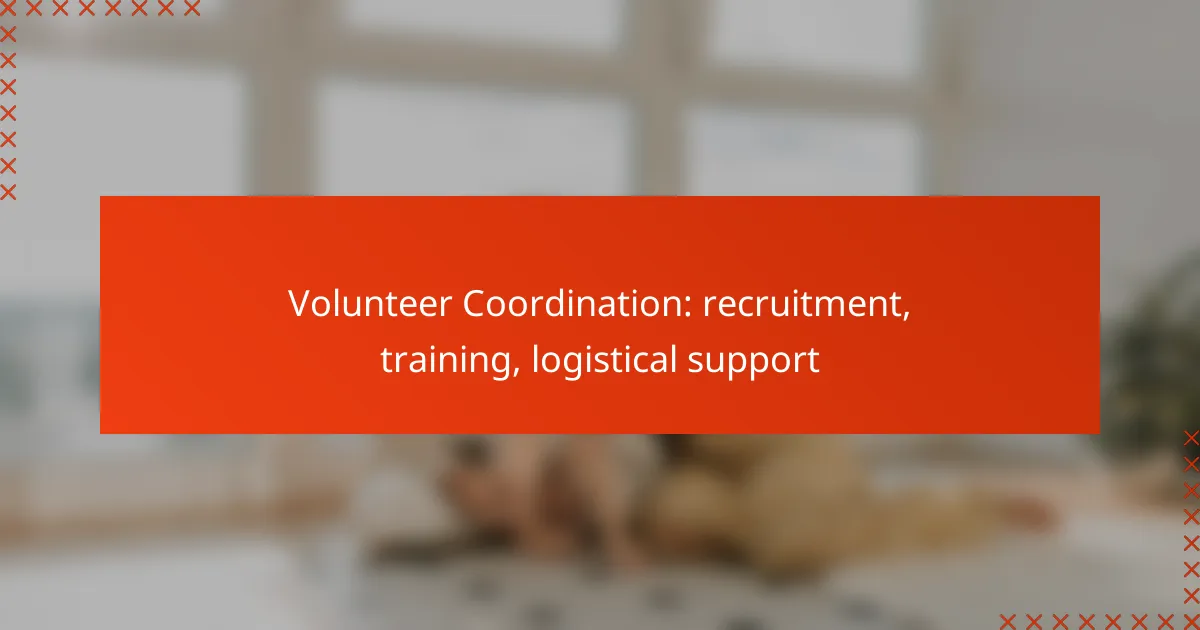Planning a successful festival requires careful scheduling and time management to ensure a seamless experience for attendees. By considering factors such as local regulations, vendor availability, and audience engagement, organizers can create a well-structured timeline. Effective strategies, including task prioritization and delegation, are essential for coordinating all aspects of the event. Understanding the influence of festival duration on logistics and crowd management further enhances the planning process.

How to effectively schedule a festival in Australia?
To effectively schedule a festival in Australia, it’s essential to plan meticulously, considering local regulations, vendor availability, and audience engagement. A well-structured timeline and coordination with all stakeholders will ensure a smooth event execution.
Utilize event scheduling software
Event scheduling software can streamline the planning process by allowing you to manage tasks, timelines, and resources in one place. Tools like Eventbrite or Asana help track progress and assign responsibilities, making collaboration easier among team members.
Choose software that offers features like calendar integration, budget tracking, and communication tools to enhance efficiency. This can save time and reduce the likelihood of errors during the planning phase.
Establish a timeline with key milestones
Creating a timeline with key milestones is crucial for keeping your festival on track. Start by outlining major tasks such as venue booking, marketing launches, and vendor confirmations, then assign deadlines to each.
Break down larger tasks into smaller, manageable steps to monitor progress effectively. Regularly review the timeline to adjust for any unforeseen changes or delays, ensuring that all aspects of the festival are covered well in advance.
Coordinate with local vendors and venues
Effective coordination with local vendors and venues is vital for a successful festival. Begin by identifying potential partners, such as caterers, sound technicians, and security services, and reach out to them early in the planning process.
Establish clear communication channels and confirm availability, pricing, and services offered. Building strong relationships with local vendors can lead to better deals and more reliable service on the event day.
Incorporate buffer times for each activity
Incorporating buffer times for each activity is essential to accommodate any unexpected delays or issues. Aim to add extra time between scheduled events, such as performances or workshops, to allow for setup and transitions.
A good rule of thumb is to allocate an additional 10-20% of the expected duration for each activity. This approach helps maintain a relaxed atmosphere and keeps the festival running smoothly, enhancing the overall experience for attendees.

What are the best time management strategies for festival planning?
Effective time management strategies for festival planning include prioritizing tasks, delegating responsibilities, and utilizing project management tools. These approaches help ensure that all aspects of the event are organized and executed efficiently, ultimately leading to a successful festival experience.
Prioritize tasks based on urgency
Prioritizing tasks based on urgency is crucial in festival planning. Identify which tasks must be completed first, such as securing permits or booking vendors, and focus on those. A common method is the Eisenhower Matrix, which categorizes tasks into four quadrants based on urgency and importance.
For instance, tasks that are both urgent and important should be tackled immediately, while those that are important but not urgent can be scheduled for later. This helps streamline efforts and allocate time effectively.
Delegate responsibilities to team members
Delegating responsibilities is essential for managing time effectively during festival planning. Assign specific roles to team members based on their strengths and expertise, ensuring that everyone knows their responsibilities. This not only lightens the workload but also fosters accountability.
For example, one person could handle logistics, while another manages marketing. Regular check-ins can help keep everyone aligned and ensure that tasks are progressing as planned.
Use project management tools like Trello
Utilizing project management tools like Trello can significantly enhance time management in festival planning. These platforms allow teams to create boards for different aspects of the event, track progress, and set deadlines. Visualizing tasks can help identify bottlenecks and streamline communication.
Consider setting up lists for tasks that are to-do, in progress, and completed. This simple structure can help keep everyone on the same page and ensure that deadlines are met, ultimately contributing to a well-organized festival.

What factors influence festival duration?
Festival duration is influenced by several key factors, including the type of festival, the number of performances or activities scheduled, and the expected attendance which affects crowd management. Understanding these elements can help in planning an effective and enjoyable event.
Type of festival (music, arts, food)
The type of festival significantly impacts its duration. Music festivals often span multiple days to accommodate numerous acts, while arts festivals may focus on a single day or weekend, featuring workshops and exhibitions. Food festivals can vary widely, lasting from a few hours to several days, depending on the number of vendors and activities.
For example, a three-day music festival might include multiple stages and performances each day, while a one-day food festival could feature cooking demonstrations and tastings. When planning, consider the nature of the festival and how it aligns with audience expectations.
Number of performances or activities
The number of performances or activities directly correlates with how long a festival will last. More activities typically require a longer schedule to ensure attendees can enjoy everything without feeling rushed. For instance, a festival with ten different food trucks and live cooking shows may need a full day to allow for sampling and interaction.
As a guideline, aim for a balanced schedule that allows for breaks between activities. This helps prevent attendee fatigue and enhances the overall experience. Consider using a staggered schedule to manage time effectively.
Expected attendance and crowd management
Expected attendance plays a crucial role in determining festival duration. Larger crowds may necessitate longer event times to manage entry and exit, as well as to provide adequate facilities. For example, a festival expecting thousands of attendees might extend its hours to prevent overcrowding at popular events.
Effective crowd management strategies, such as timed entry or staggered performances, can help maintain a smooth flow throughout the festival. Planning for peak times and potential bottlenecks is essential for ensuring a positive experience for all attendees.

How to choose the right venue for your festival?
Choosing the right venue for your festival involves assessing capacity, layout, accessibility, and compliance with local regulations. A well-selected venue can enhance attendee experience and ensure smooth event operations.
Assess venue capacity and layout
Start by determining the expected number of attendees to select a venue that can comfortably accommodate them. A good rule of thumb is to allow around 10 square feet per person for standing events and 15-20 square feet for seated arrangements.
Consider the layout of the venue as well. Ensure there is enough space for stages, vendor booths, and audience areas, while also allowing for smooth traffic flow. A well-planned layout can prevent bottlenecks and enhance the overall experience.
Evaluate accessibility for attendees
Accessibility is crucial for ensuring all attendees can enjoy the festival. Check if the venue has features like ramps, elevators, and designated parking for individuals with disabilities.
Also, consider public transportation options and the availability of nearby accommodations. Ensuring that your venue is easily reachable can significantly impact attendance and satisfaction.
Consider local regulations and permits
Familiarize yourself with local regulations that may affect your festival, such as noise ordinances, health and safety codes, and capacity limits. These regulations can vary significantly by location and can impact your event planning.
Additionally, secure all necessary permits well in advance. This may include permits for food vendors, alcohol sales, and public gatherings. Failure to obtain the right permits can lead to fines or event cancellation.

What are the key elements of a festival timeline?
A festival timeline includes essential phases that ensure smooth execution and management of the event. Key elements involve pre-festival planning, day-of scheduling, and post-festival activities, each contributing to the overall success of the festival.
Pre-festival planning phases
Pre-festival planning is crucial for setting the foundation of a successful event. This phase typically involves securing permits, booking vendors, and coordinating logistics such as transportation and accommodations. Establishing a timeline for these tasks can help ensure that everything is in place well before the festival begins.
Consider creating a checklist that includes tasks like finalizing the festival layout, confirming entertainment schedules, and promoting the event through various channels. Aim to complete these tasks at least a few weeks in advance to allow for any unexpected issues.
Day-of event schedule
The day-of event schedule is vital for managing activities and ensuring everything runs smoothly. This schedule should outline the timing for each performance, activity, and vendor operation, along with designated staff responsibilities. A well-structured timeline can help keep attendees informed and engaged throughout the day.
Utilize tools like mobile apps or printed schedules to communicate real-time updates to staff and attendees. It’s important to build in buffer times between activities to accommodate any delays, which can help maintain a positive experience for everyone involved.
Post-festival wrap-up activities
Post-festival wrap-up activities are essential for evaluating the event’s success and planning for future festivals. This phase includes gathering feedback from attendees, vendors, and staff, as well as conducting a financial review to assess profits and expenses. Analyzing this data can provide insights into what worked well and what could be improved.
Consider holding a debriefing meeting with your team to discuss observations and suggestions. Documenting these insights can help refine your approach for the next festival, ensuring continuous improvement in your event planning process.

How to manage festival logistics effectively?
Effective management of festival logistics involves careful planning and organization to ensure all elements run smoothly. Key aspects include creating a detailed checklist and coordinating transportation for all necessary equipment.
Implement a logistics checklist
A logistics checklist is essential for tracking tasks and ensuring nothing is overlooked. Start by listing all critical components such as permits, vendor arrangements, equipment rentals, and staffing needs.
Break down each category into actionable items with deadlines. For example, securing permits should be prioritized at least several weeks before the event, while vendor contracts may need finalization a month in advance.
Regularly review and update the checklist as tasks are completed or new items arise. This practice helps maintain focus and accountability among team members.
Coordinate transportation for equipment
Transportation logistics are crucial for ensuring that all equipment arrives on time and in good condition. Identify the types of equipment needed, such as sound systems, lighting, and staging materials, and determine their delivery schedules.
Consider using local transportation companies that specialize in event logistics to streamline the process. It’s advisable to schedule deliveries during off-peak hours to avoid traffic delays and ensure timely setup.
Establish a contingency plan for potential transportation issues, such as vehicle breakdowns or delays. Having backup options can prevent last-minute chaos and ensure the festival runs smoothly.



